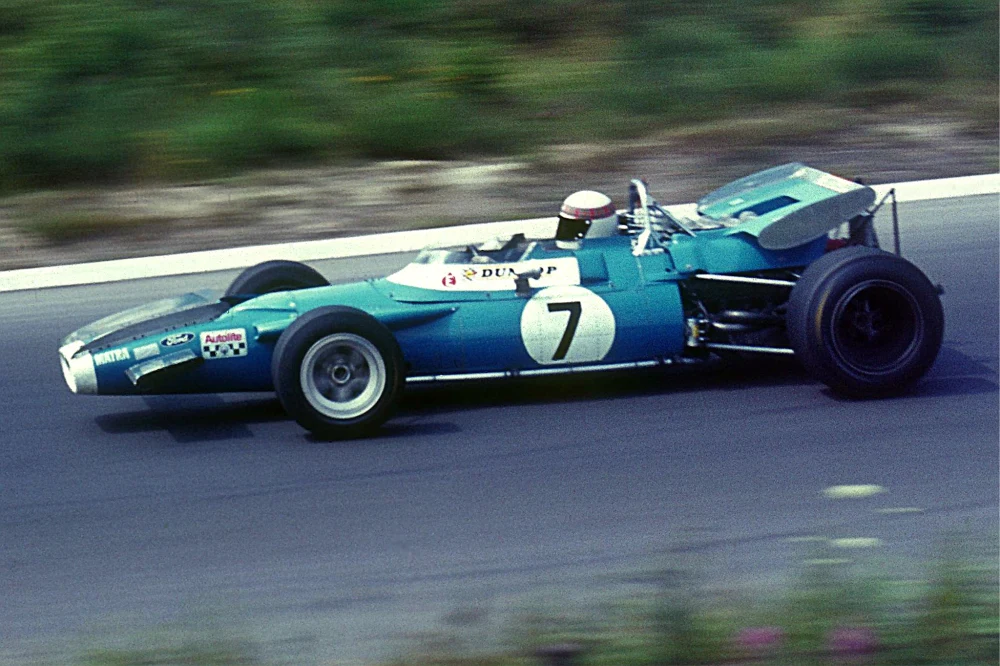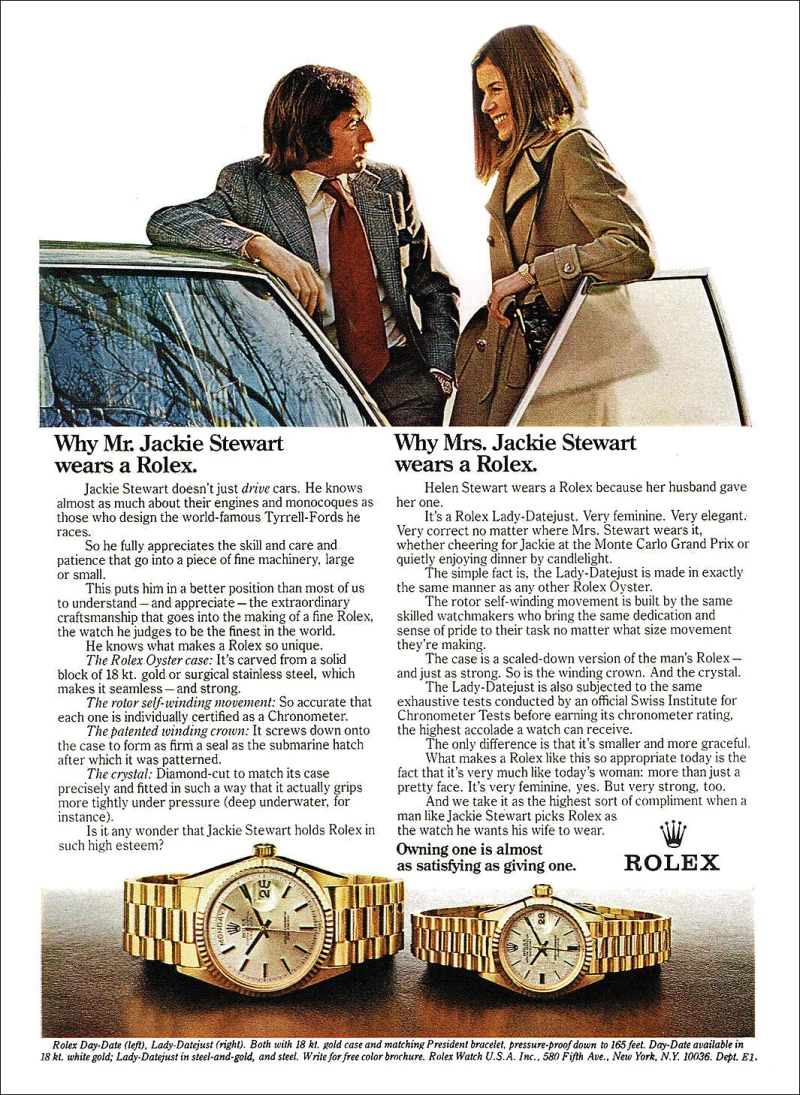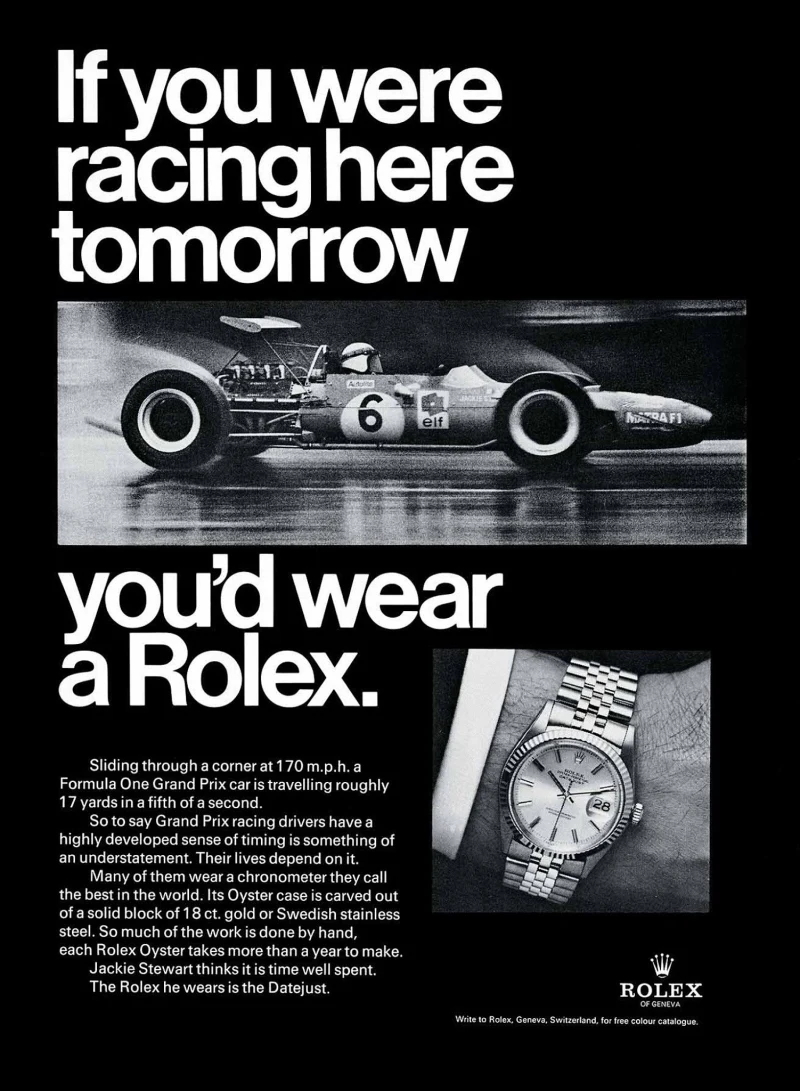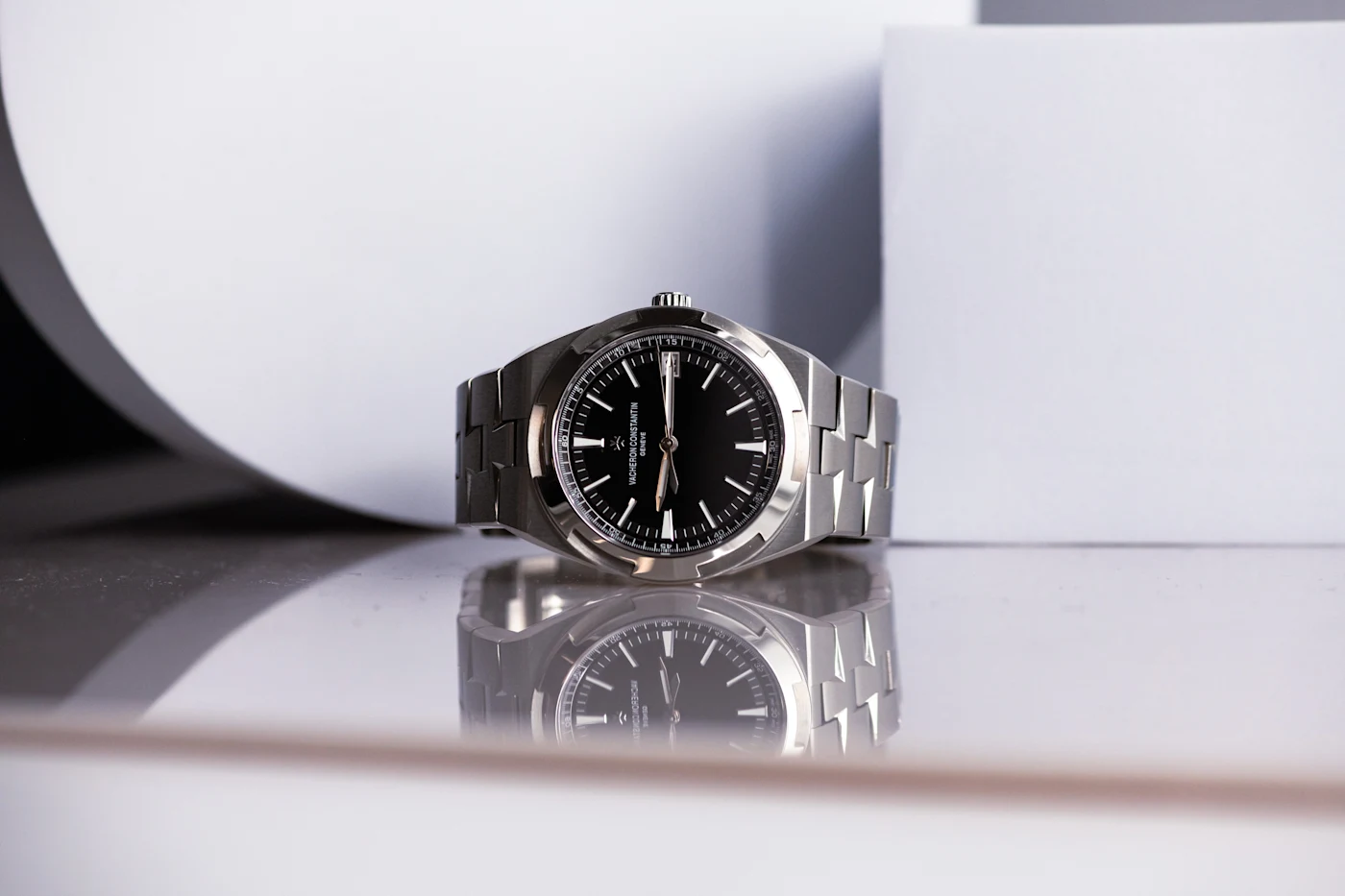31st Jan 2023
Jackie Stewart and Rolex – Precision and Integrity
by Andy Callan
In much the same way as a profound knowledge of watches isn’t necessary to recognise the name Rolex, similarly, even those with no interest in motorsport can appreciate the legend that is Sir Jackie Stewart OBE.
The two entities have long since transcended their descriptions as mere ‘watchmaker’ and ‘racing driver’ and have entered the public consciousness—each having such an impact on their respective fields at a deeper level their pairing just makes sense.
Rolex was among the first brands to recognise the marketing potential in aligning their products with the highest of high-flyers. Dating all the way back to Mercedes Gleitze’s Vindication Swim of 1927, an effort which saw the promotion of the Oyster case, they have sought out those rarefied individuals who are prepared to risk it all. But there are specific parallels between motorsport and horology which are impossible to ignore. At different scales, they require some of the most advanced forms of engineering in the world. In each, there is an overwhelming demand for precision, inventiveness, and workmanship. And, of course, both are dominated by the importance of timing. Perhaps above all of that, however—and it is a quality Sir Jackie has in spades—is integrity.
Humble Beginnings
Hailing from Dunbartonshire in Scotland, Stewart suffered from severe dyslexia and left school at 15 to work at his parents’ garage, first selling petrol before later graduating to mechanic.
From there, through a combination of innate talent, extraordinary hard work and what he calls ‘mind management’, Stewart rose to the very top of his sport, becoming a three-time F1 World Champion (1969, 1971, 1973), winning 27 Grand Prix and gaining podium finishes a staggering 43 times. His antics earned him the nickname The Flying Scot, but in many ways, it was his efforts away from the track which have seen him maintain his exalted status today.

Formula 1 in Stewart’s era was going through its greatest evolution ever. Engine sizes doubled over the course of a year, going from 1.5-litres to 3.0-litres between 1965-1966. That extra power translated into much greater speeds, meaning the dangers grew exponentially too. In fact, it was estimated a driver who raced for five years during the period had a two-thirds chance of being killed. Stewart himself estimates he lost 57 friends to racing at the time.
So, as head of the GDPA (Grand Prix Drivers Association), he campaigned fiercely for improved safety; a move which saw fatalities drop massively in F1 and trickled down into touring and sports car championships too. It also led to the fabled Nürburgring, where Lauda came within a whisker of adding himself to the statistics, being dropped from the calendar altogether, the circuit deemed unworkable for safety crews.
But not every move of Stewart’s was well received, and he was the recipient of death threats following Nürburgring’s demise. Yet, harkening back to the integrity which has guided him faithfully throughout his career, he remained resolute.
Stewart and Rolex
It was that quality which attracted Rolex to affiliate with the great driver. The brand has a long history with motoring pioneers, starting with Sir Malcolm Campbell’s land speed record attempts in his Bluebird car in the 1930s.
Three decades later, visionary Rolex CEO, André Heiniger approached Stewart to propose a role as brand Testimonee, winning his signature on the same day as those of golf champion Arnold Palmer and skiing legend Jean-Claude Killy; April 28th 1968.
The presence of the Flying Scot did much to boost Rolex’s presence in the sport. He had won several high profile races by this time and would secure his first F1 championship the following season. But Stewart had already declared himself a Rolex fan.
In 1966, after winning Rookie of the Year at the Indianapolis 500, driving a Lola T-90 Ford for the Mecom Racing Team, he told team boss, John Mecom he wanted to buy himself a Rolex to celebrate. He considered them the best watches available and owning one was a lifelong ambition. Mecom took Stewart to a dealer he knew well in Houston who would, he promised, give him a good deal. Stewart picked out a yellow gold Day-Date, not the most obvious choice for a racer’s watch. The bracelet, however, needed to be resized and the driver was asked to come back the following afternoon to collect his new watch. But when he returned, he found that Mecom, a larger-than-life Texan oilman, had ordered the standard dial be swapped for the full diamond pavé version out of gratitude. True to his roots, Stewart changed it back, later saying, ‘at that time, and still, I wasn’t really much of a diamond guy.’
You get the impression that unpretentiousness has been key to securing the incredible 55-year relationship with Rolex.


When asked how he had managed to stay an ambassador for so long, Stewart replied, ‘you’ve got to over-deliver. If you over-deliver, you never get the sack.’
Those are clearly more than mere words. Stewart puts his all into promoting Rolex, even going so far as having the left sleeves of his shirts tailored shorter so his watch remains clearly visible at all times.
Naturally, the brand has made it worth his while. Stewart’s enviable collection is now believed to total more than two dozen Rolex models, including some real stunners. The man himself singles out his fleet of Daytonas as personal favourites, one awarded for each of his three Monaco GP wins, plus another to celebrate the 50th anniversary of the first. He was also presented with a King Midas by Heiniger to commemorate his first world championship victory, an asymmetrical special edition gold oddity also rumoured to be a favourite of Elvis.
But his day-to-day wear remains his monochrome GMT-Master, essential for a man who, even at 83, still clocks up around 300,000 miles a year traveling the globe.

